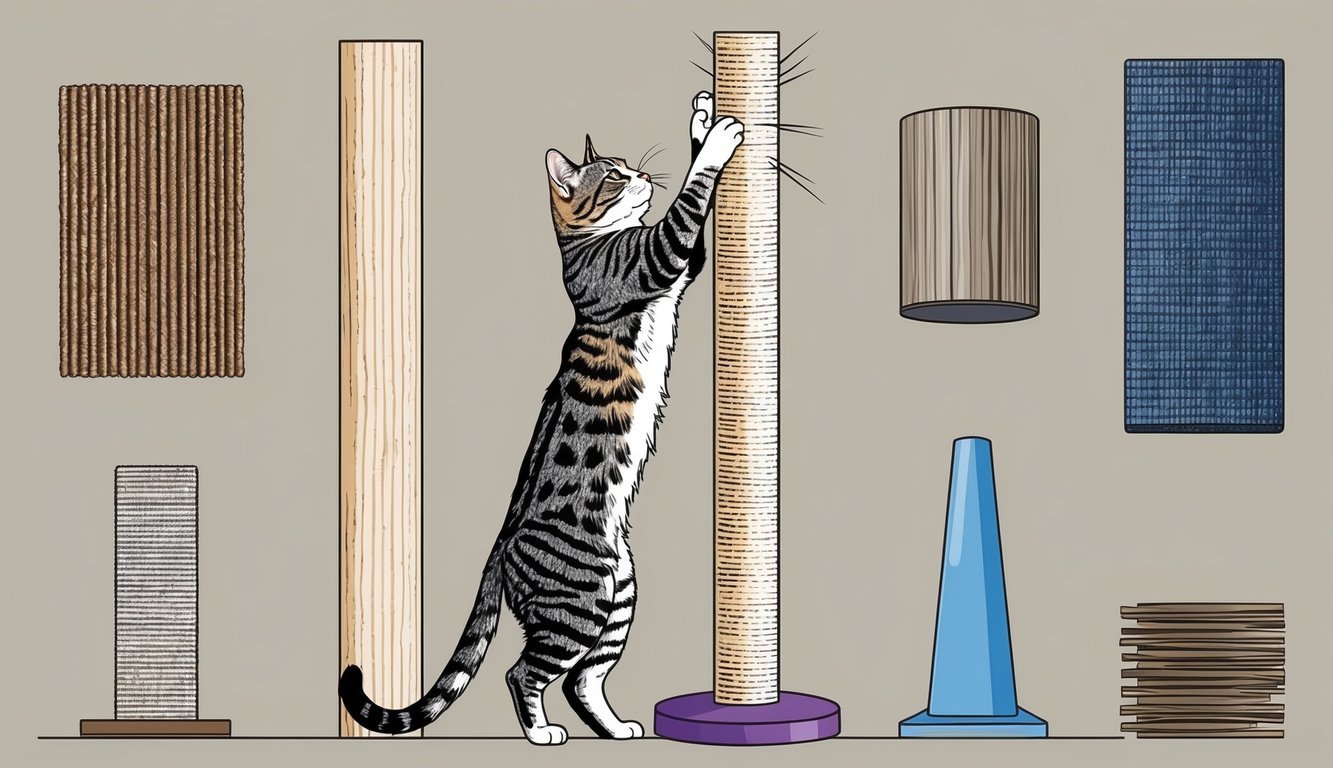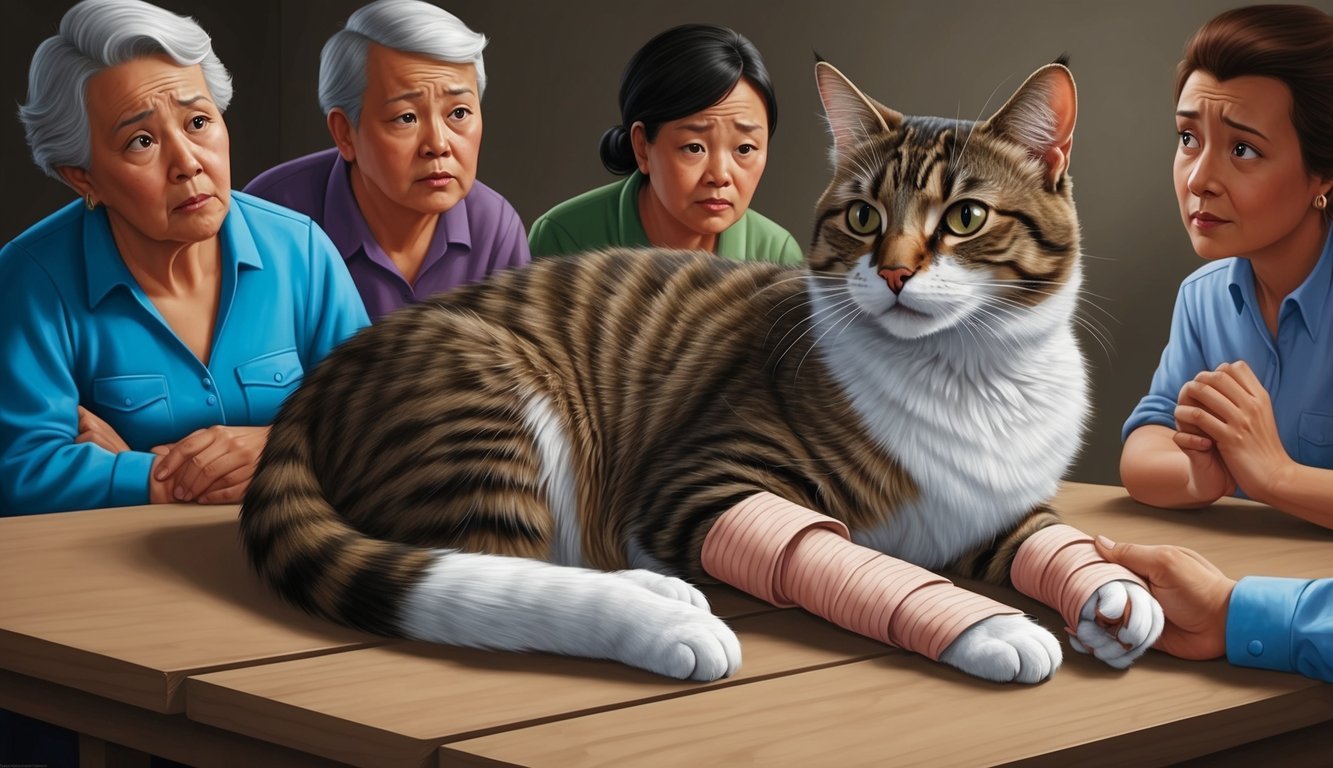Declawing a cat is often perceived as a simple solution to scratching behavior, but it’s much more complex than that. Research and veterinary insights reveal that declawing can lead to significant pain and long-lasting health issues for your cat.
Many owners are unaware that this procedure involves the amputation of the last bone of each toe, fundamentally altering how cats walk and interact with their environment.
If you’re considering declawing your cat or if you’re simply curious about its effects, it’s essential to understand the potential consequences.
Beyond physical pain, the procedure may also impact your cat’s behavior and emotional well-being, causing stress and anxiety.
There are safer alternatives that respect your cat’s natural instincts while effectively preventing unwanted scratching.
By exploring these factors, you can make an informed decision about your cat’s care and well-being.
Let’s dive into the realities of declawing and uncover both the facts and the myths surrounding this contentious topic.
Key Takeaways
- Declawing often results in chronic pain and behavior changes for cats.
- Many safe alternatives can manage scratching without harming your cat.
- Understanding the realities of declawing helps in making informed choices for your pet.
Understanding Declawing
Declawing is often misunderstood, and it’s essential to clarify what this procedure entails and how it affects your cat’s behavior and well-being.
You’ll see that declawing involves surgery, impacts feline behavior, and utilizes different techniques.
What Is Declawing?
Declawing, or onychectomy, is more than just trimming nails.
This surgical procedure removes the last bone of each toe, not just the claw.
This means that declawing entails partial digital amputation.
It’s commonly performed on the front paws, creating significant changes in how your cat interacts with the environment.
Many people assume it’s a simple solution for protecting furniture, but the reality is more complex.
This procedure can lead to long-term physical and psychological consequences, altering how your cat walks and behaves.
Understanding what declawing truly involves is crucial for making an informed decision.
Declawing and Feline Behavior
Declawing doesn’t just alter your cat’s physical state; it can also deeply affect their behavior.
Many cats experience a change in their natural instincts, as they rely on their claws for defense, climbing, and scratching.
Research indicates that declawed cats may develop unwanted behaviors.
You might notice an increase in aggression, inappropriate elimination, or anxiety.
This can happen because the cat feels vulnerable without its claws.
Additionally, declawing can lead to chronic pain, making your cat more irritable.
The emotional impact of losing their natural defenses can be significant.
Declawing Techniques
There are various techniques used during declawing, including tendonectomy and partial digital amputation.
Each method has different implications for recovery and long-term health.
- Tendonectomy involves cutting the tendons that control the claws, which can result in a less complete alteration of the paw.
- Partial digital amputation removes the last bone of the digit, leading to more significant changes.
Each technique comes with its own risks.
Complications can occur, such as infection, paw pain, and lameness.
Improper removal of claws can even result in regrowth, nerve damage, or bone spurs.
Understanding these techniques helps you appreciate the serious nature of the declawing decision.
Health Implications of Declawing
Declawing a cat can lead to serious health implications, affecting both the immediate post-surgical experience and long-term well-being.
Understanding these risks helps you make an informed decision.
Short-Term Surgical Complications
After declawing, your cat may experience a range of short-term surgical complications.
Common issues include bleeding, infection, and nerve damage.
Post-surgery concerns:
- Pain management is crucial; most cats will exhibit signs of discomfort.
- Some may experience swelling at the surgical site, which can lead to further complications.
It’s important to monitor your cat closely after the procedure.
Depending on the skill of the veterinarian and post-operative care, complications can arise in up to 50% of cases.
Potential for Chronic Pain and Lameness
Many cats suffer from chronic pain and lameness due to declawing.
The procedure removes not just the claws, but also parts of the bones in the toes.
Chronic pain indicators include:
- Reluctance to engage in play.
- Difficulty jumping or climbing.
Your cat may develop what is known as phantom pain where they feel discomfort even in the absence of a physical cause.
Additionally, altered movement can lead to arthritis over time.
This ongoing discomfort can impact your cat’s quality of life significantly.
Long-Term Pain and Behavioral Problems
The impact of declawing can extend well beyond the initial healing phase.
Long-term pain can manifest as ongoing discomfort or chronic inflammation.
Behavioral changes often arise, including:
- Aggression or increased biting.
- Inappropriate urination as a means of stress relief.
The discomfort from changed foot structure may lead your cat to avoid scratching altogether, which is natural behavior.
Alterations to their mobility and natural instincts can result in anxiety and stress-related issues.
Keeping these potential long-term problems in mind is vital for your cat’s overall health.
Psychological and Behavioral Aspects
When it comes to declawing, the implications extend beyond physical pain.
Significant psychological and behavioral changes can occur, affecting your cat’s well-being and your relationship with them.
Understanding these factors is crucial for any cat owner.
Scratching as a Natural Behavior
Scratching is a fundamental natural behavior for cats.
It helps them maintain their claws, stretch their muscles, and mark their territory.
By scratching, cats release pheromones from glands in their paws.
This activity contributes to their mental health and overall happiness.
Providing a dedicated scratching post can help satisfy this instinct.
It’s important to note that denying them this natural behavior through declawing can lead to frustration.
This frustration may manifest in other ways, such as finding inappropriate places to scratch.
Declawing and Behavioral Changes
Declawing can dramatically alter your cat’s behavior.
Many cats experience increased aggression after the procedure.
They may resort to biting as a defensive mechanism, as they can no longer use their claws for protection.
Additionally, some cats develop anxiety or fearfulness, leading to litter box avoidance.
This change can create a challenging environment for both you and your cat.
Studies indicate that behavioral problems tend to escalate in declawed cats, affecting their overall quality of life.
Catnip and Scratching Activity
Catnip can play a vital role in encouraging healthy scratching behaviors.
This herb often stimulates playful behavior and can help redirect your cat’s scratching from furniture to appropriate surfaces.
Using catnip-infused scratching posts can further enhance this behavior.
It creates a positive association with scratching while allowing your feline companion to express its natural instincts.
As a result, you can foster a more harmonious living environment for both you and your cat.
Alternatives to Declawing

If you’re considering ways to prevent your cat from scratching furniture, there are several effective alternatives to declawing that prioritize your cat’s well-being.
These options include providing appropriate scratching surfaces, using protective measures, and employing behavior modification techniques.
Using Scratching Posts
Investing in scratching posts is essential for keeping your cat happy and your furniture safe.
Cats have a natural instinct to scratch, so providing designated scratching surfaces can help redirect that behavior away from your couch or chairs.
Look for sturdy posts made from materials like sisal or cardboard.
Place them strategically in areas where your cat tends to scratch.
You might also consider different styles, such as vertical or horizontal posts, to cater to your cat’s preferences.
Encourage your cat to use the posts by rubbing catnip on them or attaching toys.
This can make the posts more enticing and help your cat associate them with play.
Regularly replace worn-out scratching posts to keep your cat engaged.
Nail Caps and Other Protective Measures
Nail caps offer a humane way to protect your furniture while keeping your cat’s claws safe.
These small, plastic covers are glued onto your cat’s claws and serve as a barrier against scratching.
They are available in various colors and can be a fun addition to your cat’s appearance.
Applying nail caps typically lasts for several weeks, as they will eventually fall off with natural claw growth.
Make sure to follow proper application instructions and check your cat’s claws regularly for any discomfort.
Aside from nail caps, consider softening surfaces where your cat tends to scratch.
Using furniture covers or protective sprays designed to deter scratching can further safeguard your belongings.
Behavior Modification Techniques
Implementing behavior modification techniques can be incredibly effective in addressing scratching issues.
Start by observing when and why your cat scratches certain surfaces.
This understanding can help you address the behavior more effectively.
Positive reinforcement is a key strategy.
Whenever you catch your cat scratching the appropriate surfaces, reward them with treats or praise.
Redirect them gently to their scratching post if they start scratching furniture.
Consistent training will reinforce good behavior over time.
You can also use deterrents like double-sided tape on furniture or specialized sprays that discourage scratching.
With patience and practice, your cat will learn to scratch in designated areas.
Considerations for Cat Owners
When thinking about declawing your cat, it’s essential to weigh both the costs and benefits while ensuring you make an informed decision that prioritizes your pet’s well-being.
Costs and Benefits
Declawing may seem like a straightforward solution to prevent scratching.
However, consider the financial aspects involved.
The cost of declawing a cat can range from $100 to $400, depending on your location and the clinic.
Benefits might include preserving furniture and reducing injury risk to yourself or others.
Yet, the procedure is not without risks.
Surgical complications include potential infection, nerve damage, and even chronic pain.
Many cats may experience long-term changes in behavior, like increased aggression or anxiety, which can lead to additional challenges for you as a cat owner.
Making Informed Decisions
Before deciding, educate yourself about the procedure and its implications.
Speak with your veterinarian about possible alternatives, such as regular nail trimming, scratching posts, or soft nail caps.
Consider how declawing can affect your cat’s quality of life.
Remember, you’re altering their natural behavior, which may lead to unforeseen consequences.
As a responsible owner, it’s crucial to reflect on your motivations.
Ask yourself if declawing truly aligns with your values regarding pet care.
Making a well-informed choice helps ensure a happier life for your feline friend.
Declawing Myths and Facts
There are many myths surrounding declawing that can confuse you as a cat owner.
Understanding the truth about this procedure can help you make informed decisions regarding your pet’s well-being.
Addressing Common Misconceptions
A common myth is that declawing is a routine cosmetic procedure, but this isn’t true.
It is a surgical intervention, specifically an onychectomy, involving the amputation of the cat’s toe bone along with the claw.
This means that declawing is not merely a nail trim; it operates more like removing the first joint of a human finger.
Another misconception is that declawing does not cause pain.
While some believe it’s simply a way to prevent damage to furniture, many cats can experience chronic pain post-surgery.
Cats are adept at hiding their pain, so you may not realize your pet is suffering after the procedure.
Understanding the Reality
It’s essential to recognize that declawing can lead to significant health concerns.
The procedure often results in lasting physical and behavioral changes.
After declawing, some cats might exhibit signs of anxiety or aggression, stemming from their altered ability to defend themselves.
There are alternative solutions, like Soft Paws—plastic nail caps that can be attached to your cat’s claws.
These are a non-invasive option that protects both your furniture and your cat’s well-being.
Frequently Asked Questions

When considering declawing, many concerns arise about its effects, alternatives, and legalities.
Below are some key questions that often come up related to declawing cats, helping you make informed decisions.
What are the long-term effects on cats after being declawed?
Declawing can lead to various long-term issues for cats.
Many experience chronic pain, lameness, or complications like infection.
There’s also a risk of arthritis, which may develop over time, affecting your cat’s mobility and overall quality of life.
Are there any humane alternatives to declawing a cat?
Yes, there are several humane alternatives to declawing.
Options include providing scratching posts, using nail caps, or regular nail trimming.
These methods can help manage clawing behavior without resorting to surgery, ensuring your cat maintains their natural anatomy.
What reasons do cat owners have for declawing their pets?
Many cat owners consider declawing to prevent furniture damage or to reduce scratching injuries.
Some may feel it’s the only way to keep their home safe.
These reasons, while understandable, often overlook the physical and psychological implications for the cat.
In what areas is it illegal to declaw cats, and why?
Declawing cats is illegal in several places, including some parts of New York, California, and various countries.
The ban reflects growing recognition of the procedure’s cruelty and the associated risks to a cat’s health and well-being.
How does declawing impact a cat’s behavior and emotions?
Declawing can significantly alter a cat’s behavior and emotions.
Many cats may develop issues such as aggression, anxiety, or litter box aversion.
The removal of claws can lead to feelings of vulnerability, as they lose a natural form of defense and expression.
What are the financial costs associated with declawing a cat?
The financial costs for declawing can vary widely, typically ranging from $100 to $300.
This fee often covers the surgery itself, possible complications, and post-operative care.
Considering potential long-term health issues and behavioral problems, the costs can extend beyond the initial procedure.


